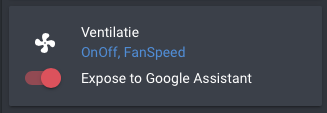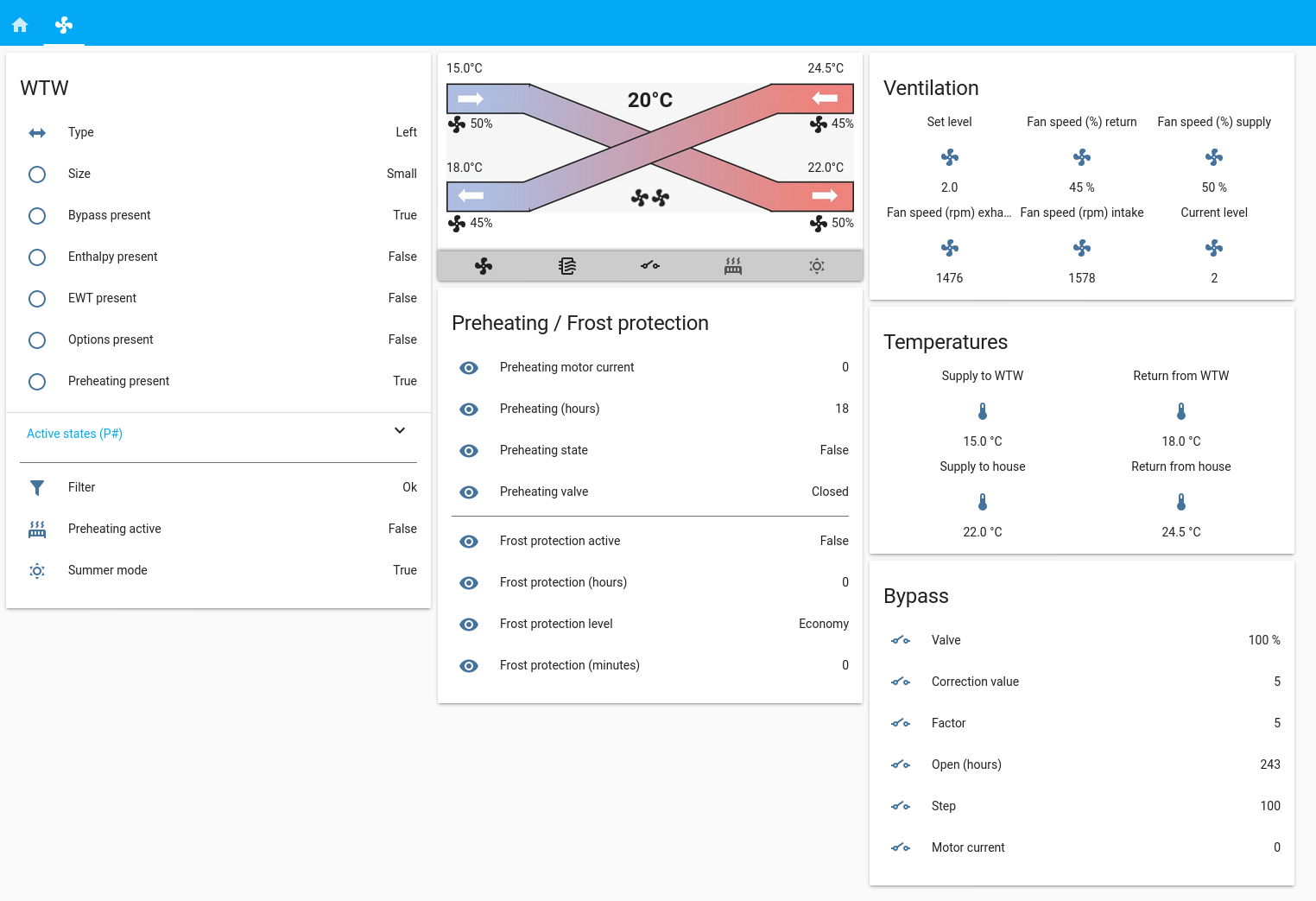WHR 930
Manage a Storkair WHR 930 system using MQTT.
See also my blog posting I wrote about the WHR 930
Installation and configuration
This (python) code uses some libraries that need to be installed. Assuming you are using a Raspberry Pi or another Debian based Linux distribution, the following command's will install the dependencies
$ sudo apt-get install python3-serial python3-pip python3-yaml
$ sudo pip3 install paho-mqtt
After installing the dependencies, clone this repository and modify the MQTT settings in src/whr930.py and run sudo make install.
$ git clone https://github.com/Mosibi/whr_930.git
$ vi src/whr930.py
$ sudo make install
$ sudo systemctl start whr930.service
Home Assistant configuration
Copy src/wtw.yaml in the config/includes directory of your home assistant installation and modify the file configuration yaml to include the following:
homeassistant:
< ... your other config settings under homeassistant ... >
packages:
wtw: !include includes/wtw.yaml
Add the content of src/lovelace.yaml to your current dashboard configuration, it will place the WTW configuration in a separate tab.
Voice control integration
When you integrate Amazon Alexa or Google Home or some other voice control method, it is possible to set the ventilation to a certain level using a voice command. In includes/wtw.yaml a virtual fan is created which can be called from the emulated_hue component or Home Assistant Cloud to execute the voice command.
To use with the emulated_hue component, add the following to your configuration.yaml and let Alexa do a discovery of the devices (Alexa discover devices). For Google Home users it may work, but there is a big warning on the emulated_hue page which states that new users have to use the google_assistant or the Home Assistant Cloud integration
emulated_hue:
advertise_ip: <ip address>
expose_by_default: false
exposed_domains:
- fan
entities:
fan.ventilation:
hidden: false
iamhaller learned me that with Home Assistant Cloud you have to configure Google Home or Alexa after which you can expose the virtual fan.

External resources
I've extended the possibilities of the standard Lovelace interface using multiple plugins. Visit those pages and follow the installation instructions for them:
- lovelace-wtw : Nice graphical flow overview, created by Tim Jongsma
- lovelace-fold-entity-row : Use to fold in the P status overview
Note: the lovelace-wtw repo links points to my own fork of Tim's code. I created a pull request for his version to make it compatible with my code. When that PR is accepted, I will use his version.
